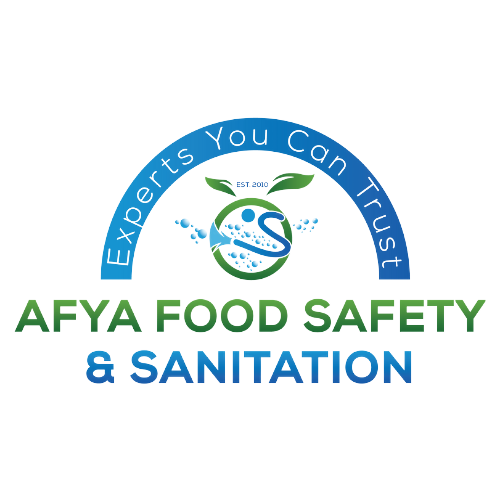
Please Wait For Loading

Please Wait For Loading
Maryland, MD USA
+1 (443) 666-9132
info@afyafoodsafety.com
Opening Hours: 9:00 AM - 5:00 PM
Copyright ©Afya Food Safety all rights reserved.
You can also reach us via Phone: +1 443 666 9132 or via Email:info@afyafoodsafety.com
3 Essentials of Sanitation and Cleaning Protocols
Sanitation and cleaning protocols have taken center stage across industries in this era where health and safety are paramount concerns. The food service industry, healthcare facilities, manufacturing plants, and even our homes have all heightened their focus on maintaining impeccable cleanliness standards. Journey with us as we look at the significance of sanitation and cleaning protocols, explore the latest trends, and provide valuable insights for ensuring your environment remains safe and spotless.
The Essence of Sanitation and Cleaning Protocols
Sanitation and cleaning protocols encompass a set of practices, procedures, and guidelines designed to eliminate or reduce the presence of contaminants, pathogens, and allergens from surfaces, equipment, and environments. These protocols serve the following critical purposes:
The primary goal of sanitation and cleaning protocols is to prevent the spread of diseases, both in commercial settings and homes. In the food industry, rigorous sanitation safeguards consumers from foodborne illnesses.
Sanitation protocols reduce the risk of injuries from slips and falls hence enhancing safety. This is because diligently observing a clean space eliminates hazards, spills, and debris.
In manufacturing settings, sanitation is key to ensuring the quality and integrity of products. Contaminated equipment or facilities can compromise product quality and safety.
Developments in Sanitation and Cleaning Protocols
Sanitation and cleaning have evolved in recent years, and so have the protocols. Some of the advancements identified include:
Globally companies are increasingly becoming conscious of their impact on the environment. Their choices in sanitation and cleaning protocols are no exception. Many industries now seek green solutions in cleaning and use of energy-saving equipment.
Sanitation protocols are no longer based solely on a fixed schedule. Data analytics and real-time monitoring are now employed to assess cleanliness levels, helping organizations target areas that need attention.
With the growing importance of sanitation, comprehensive training programs for employees have become standard practice. Properly trained personnel are better equipped to implement protocols effectively.
Best Practices for Effective Sanitation and Cleaning Protocols
Maintaining high standards of cleanliness requires a proactive approach and a commitment to best practices. Food manufacturing companies can achieve this by observing the following:
Start by creating a detailed sanitation and cleaning plan tailored to your environment. Consider factors like the type of contaminants, frequency of cleaning, and the equipment and products needed.
Identify high-touch surfaces and prioritize them in your cleaning regimen. These surfaces, such as doorknobs, light switches, and shared equipment, are more likely to harbor contaminants
Select cleaning products and disinfectants that are appropriate for your specific needs. Always follow manufacturer recommendations for use and contact time.
Establish routine inspections to ensure cleaning protocols are consistently followed. These inspections can help identify areas that may require additional attention.
Proper training for cleaning staff is indispensable. Employees should understand the importance of their roles and be proficient in using cleaning equipment and chemicals.
Stay up-to-date with the latest sanitation trends, regulations, and innovations. Adapt your protocols as needed to meet changing requirements and circumstances.
Conclusion
Sanitation and cleaning protocols are the unsung heroes of our modern world, ensuring our health, safety, and well-being. Whether it’s preventing the spread of diseases, maintaining the quality of products, or simply providing a safe and pleasant environment, the importance of these protocols cannot be overstated. By embracing evolving trends and adhering to best practices, we can continue to raise the bar for cleanliness standards, creating a safer and more sanitary world for everyone.
Related Posts
Categories
The Crucial Role of Pest Control and Management
May 6, 2024Maintaining the Sweet Spot: Bakery Cleaning and Sanitation
April 15, 2024Calender